Welcome to December.
It’s a month of irony, I find–the month dedicated to the celebration of light, in which we have the least amount of light. Days so short they seem to end before lunch. Cloudy skies, elusive sun. It’s the month in which winter starts, and ironically the one which is devoted to greenery. I mean, when else do people actually lug entire trees into their living rooms? Behavior that would seem eccentric in May makes complete sense in December.

One of the best things about December, whether you celebrate Christmas or not, is that almost everywhere you go, there are evergreens draped all over things. The more urban the setting, the more greenery. Shopping malls suddenly resemble forests. I found plenty of foliage today at the grocery store.
The botanist in me always glances at the evergreen decor with an eye to identification. 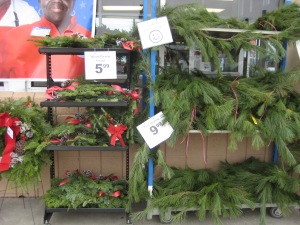
Now evergreen isn’t a type of plant, it’s a lifestyle. There are evergreen ferns, oaks, and mosses. It just means they keep some (but not all) of their leaves green all year long. (Needles are leaves, of course, they’re just shaped differently than those of the broad-leaved trees.)
Pines, spruces, firs, and cedars all get used to deck the halls and malls. Which evergreen is which? Here’s a field guide.
A simple rule of thumb: if the needles are longer than your thumb, it’s probably a pine. There are many species of pine, but some are a lot more prickly than others; the soft needles of white pine are common in those long ropes of greenery that loop around railings and stairways.
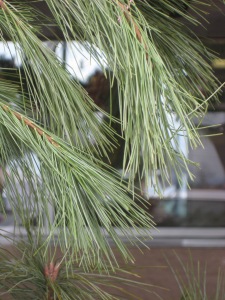 Pine needles come in clusters, so if long needles are attached to the twig in bunches, think pine.
Pine needles come in clusters, so if long needles are attached to the twig in bunches, think pine.
If short needles are borne on the twigs singly, it’s probably a spruce or a fir. 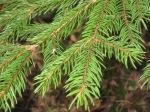
If the needles stick out from left and right of the twig, think fir. (There are other possibilities, like hemlock and yew, but fir is more commonly used for wreaths and such, especially sweet-smelling balsam fir.)
If the needles grow all around the twig, it’s one of the many species of spruce.
If the plant has a sort of scaly look, like the skin of a reptile (how festive) it’s a cedar. 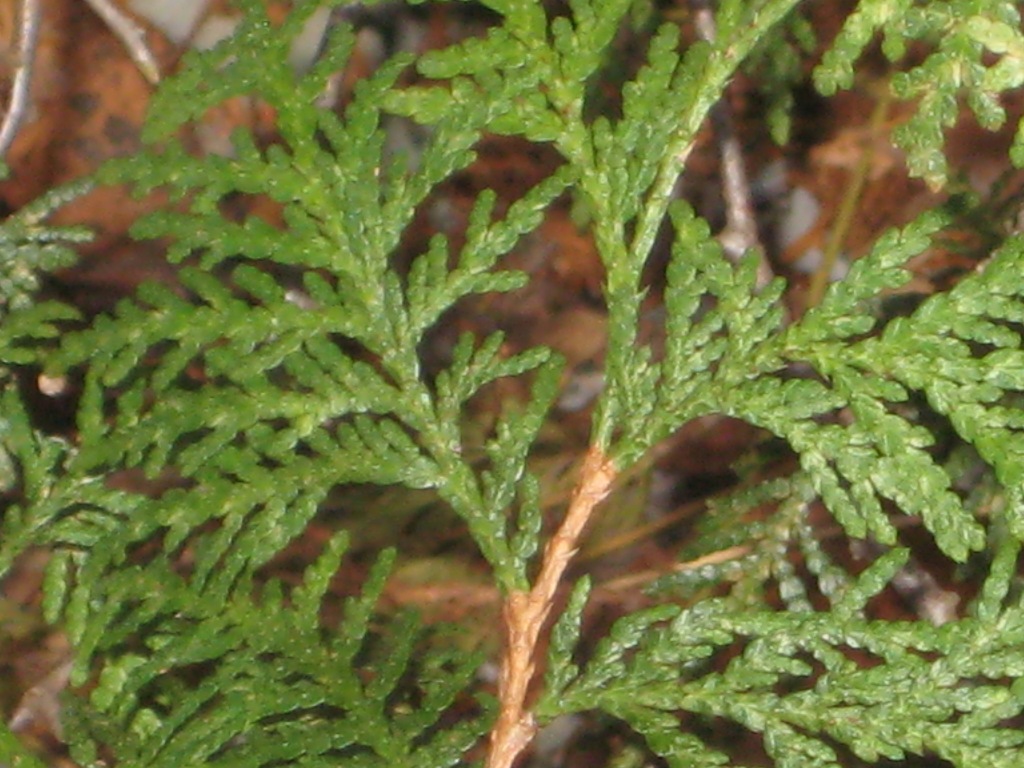
Each of the little flat “scales” is actually a short leaf, and they overlap each other like tiles on a roof. This is white cedar (aka arborvitae) which has a wonderful fragrance.
Any guesses on this species of evergreen? (Hint: the leaves will remain green for several hundred years.)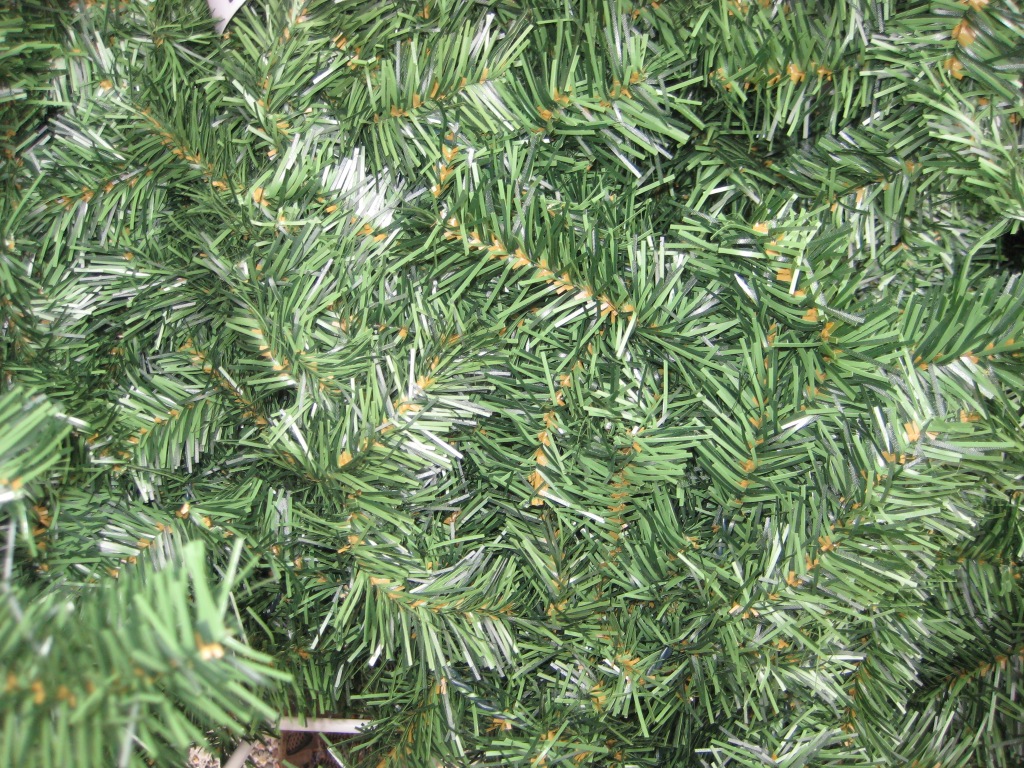
Now what you don’t want to see in a Christmas wreath is the grayish-green foliage of ground pine, also known as clubmoss (Lycopodium species). Four species of clubmosses are on the New York State Protected Plant list, classed as “exploitably vulnerable native plants.” Even clubmoss species that aren’t on the list, like the often-used Princess Pine, are too often overharvested. Clubmosses grow very very slowly, so picking a piece of clubmoss long enough to put in a wreath could wipe out two decades of growth.
Sorry. Didn’t mean to go all Grinchy on you there. Just avoid clubmoss in your decor, and I won’t have to come with my dog Max and confiscate it on Christmas Eve.
Trees in the grocery store, all month long. You gotta love it.






Is the last one Artificialis permanentii?
Have to take a look at club moss, so you and your canine pal don’t
track me down.
Are we on for next Wed at Pine Hollow?
Very informative! PS, didn’t realize that mosses were year ’round either but that would explain why they are still hanging out (even thriving) in our yard.